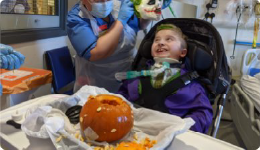Squint is a condition where the eyes do not line up perfectly together in the direction of interest (misalignment). The medical term for squint is 'Strabismus' The misalignment of the eyes can result in the eyes being either turned in towards the nose, or turned outwards, or sometimes turned up or down. It can be present at all times (constant), or can come and go (intermittent), or can switch between the two eyes (alternating). Most squints develop in the first three years of life but some can develop in older children and adults.
What causes squint in children?
A squint may present by itself without any cause or may happen due to underlying need for glasses (i.e., refractive errors like long sightedness or short sightedness) or problems with eye muscle(s) or problems in the eye (i.e. cataract, eye nerve problems). A child may have increased risk of developing squint when someone in the family has squint, or when born prematurely.
How does squint affect a child?
If a child has a squint, they may develop a 'lazy eye', which is reduced vision in the affected eye (amblyopia). Sometimes a child will complain of blurry vision or double vision, but in many instances, a squint is not noticed by the child and is usually picked up by family, friends or in photographs.
Can a child grow out of squint?
Yes, very young children can appear to have a squint due to their shape of head and eye lid, without any true misalignment of the eyes. This is called 'Pseudo-squint'. It improves with age and does not require any treatment. Children with true misalignment of their eyes require treatment.











